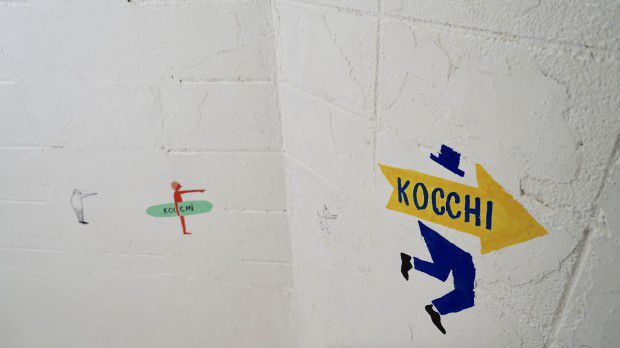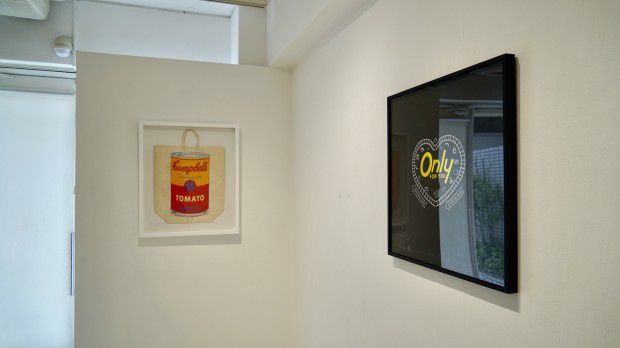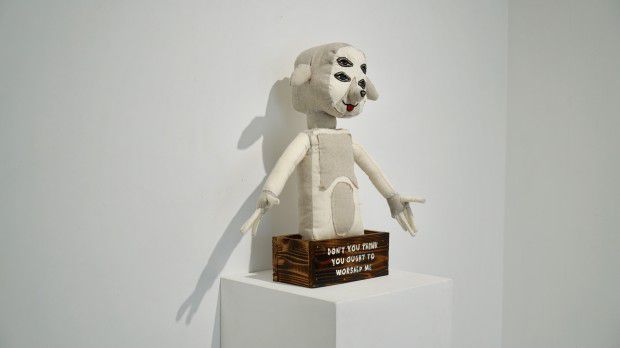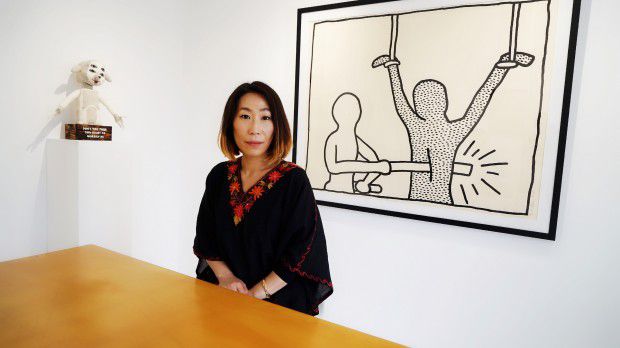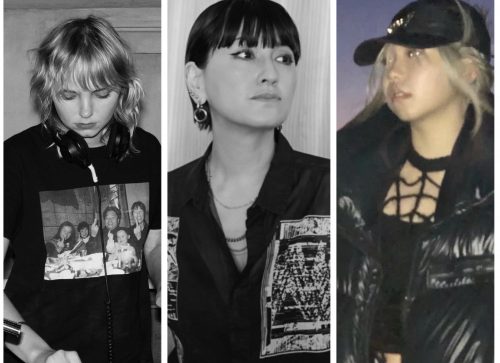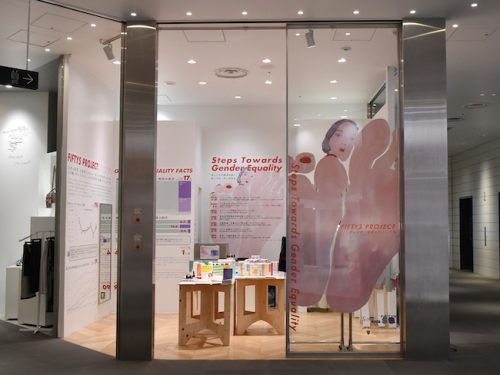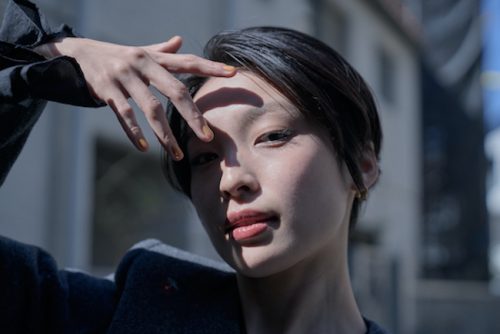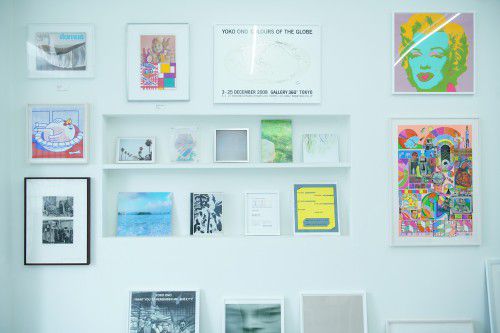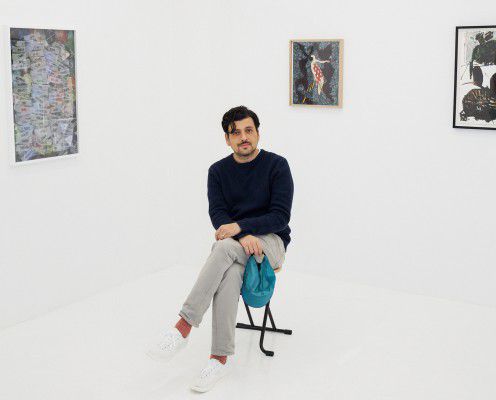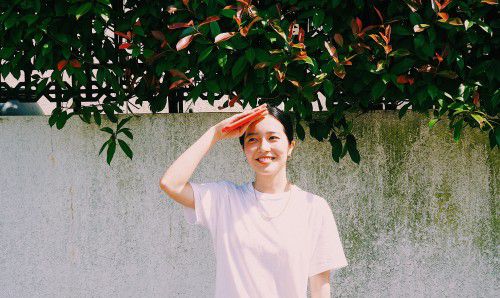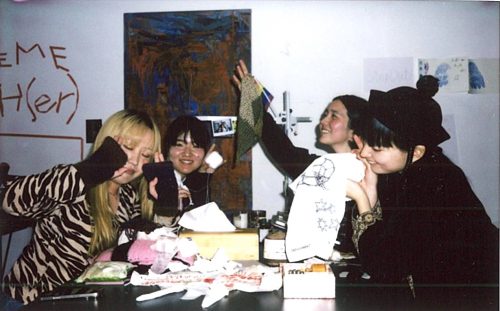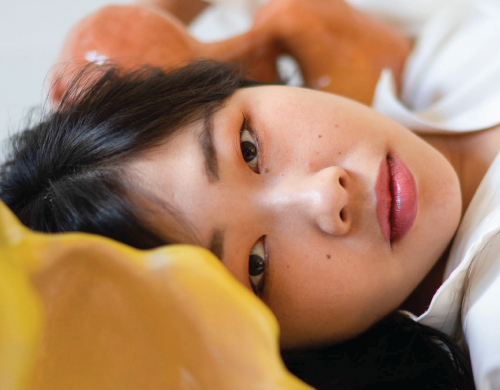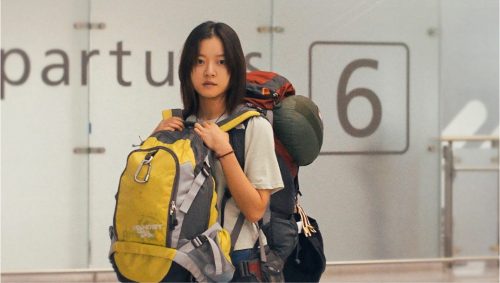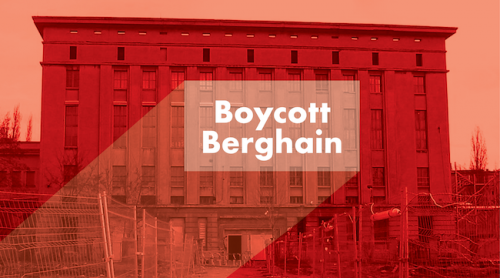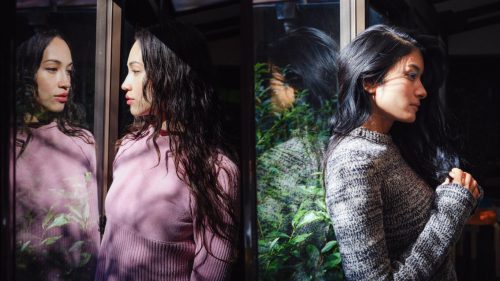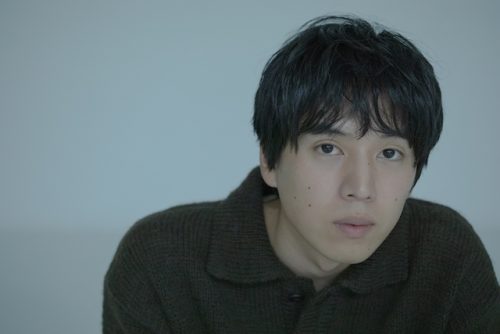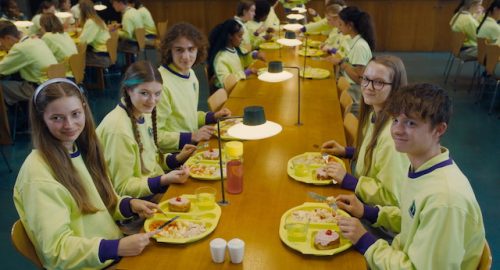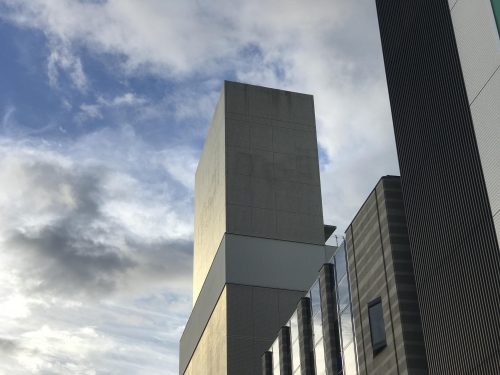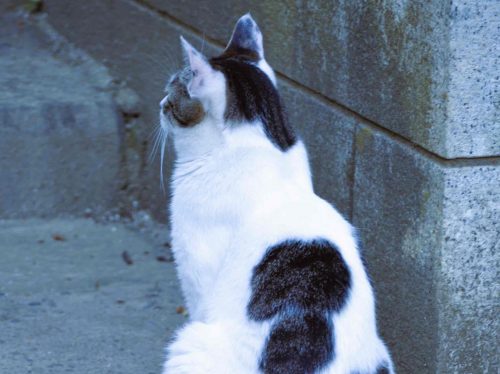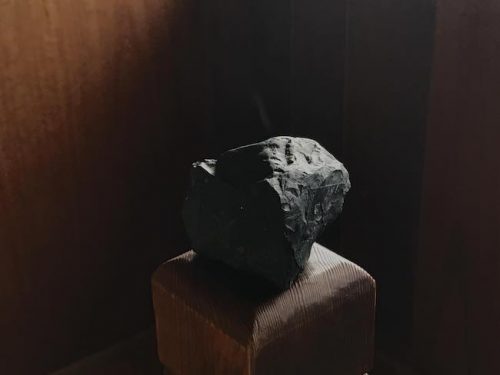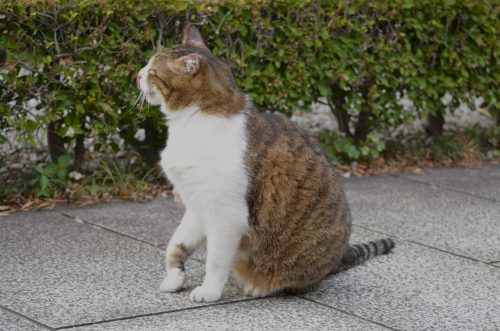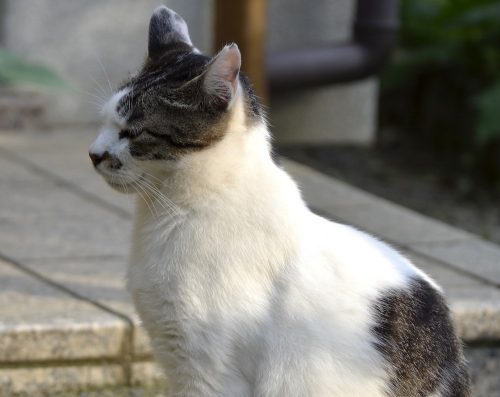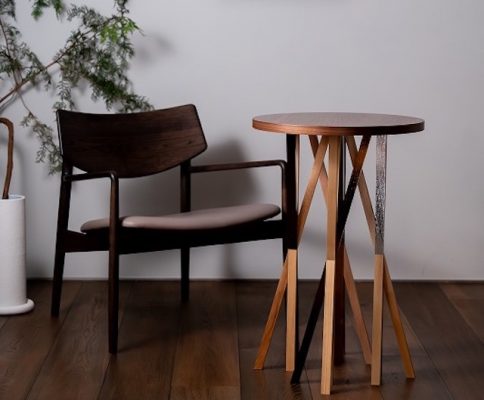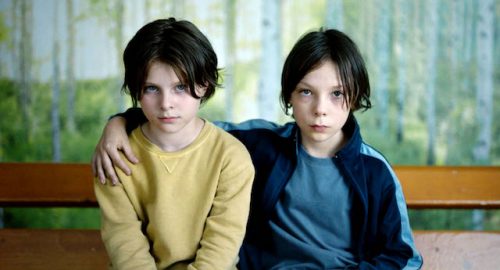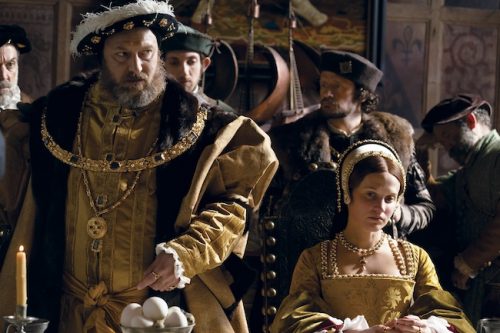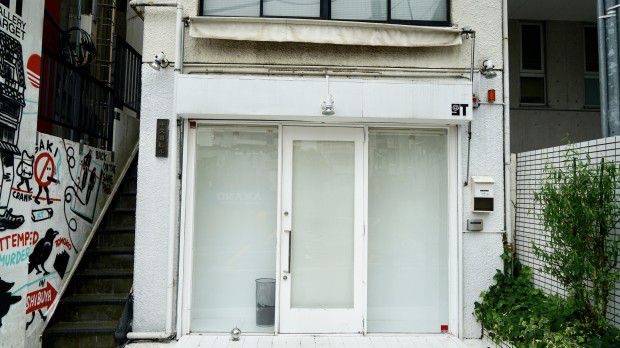
原宿の喧騒を抜けた先に佇む真っ白でスクエアな建物、それがGALLERY TARGETである。建物の傍にはNYを代表するアーティストのESPOのスプレー描き、屋内に入って1階から2階へ上がる階段にもギャラリーで展示を行った錚々たるアーティストたちのいたずら心溢れるイラストが顔をのぞかせる。このイラストに象徴されるアーティストとの親密さが、GALLERY TARGETの特徴の一つ。NYでアートに携わるようになったキュレーターの岡本智子がその人脈を活かして作り上げた展示の数々が注目を集め、「何か面白いものが見つかるエキサイティングな場所」として国内外に知られるようになっている。自分とアーティストの「好き」を損なわないギャラリーのあり方を貫いてきた、岡本の軌跡とは。
After making your way out of the Harajuku bustle, there stands a pure white and square building – GALLERY TARGET. Beside the building is a spray painting by ESPO, an artist that represents New York. As you make your way inside the building and up the stairs that take you from 1F to 2F, illustrations overflowing with a heart of playful mischief, done by prominent artists who have previously held exhibitions at the gallery, catch your interest. The intimacy between the gallery and each artist shown through these illustrations is one characteristic of GALLERY TARGET. Curator Tomoko Okamoto, using her connections in the New York art industry, has created numerous exhibitions that have attracted many people. GALLERY TARGET has come to be known, both in and out of the country, as “an exciting place where you will always find something interesting.” We learn more about Okamoto’s life trajectory in pushing for a gallery that does not dismiss her admiration towards the artists.
——岡本さんは、TARGETの前に美術関係の職業に携われていたのですか?
岡本「はい。ロードアイランド・スクール・オブ・デザインに通って美術を学んでからアートの世界に入りました。私はずっと海外生活で、親の仕事の関係で2歳の頃から気づいたらクウェートの砂漠にいたんです(笑)。中学は親の方針で日本の学校に通いましたが、文化があまりに違いすぎて馴染めず、それ以降はまた父の赴任地であるアブダビのアメリカンスクールに通いました。絵を描くことが好きだったし、日本語がうまく話せないこともあって、自然な成り行きでアメリカの美大にアプライしました」
——日本だと美大の入試では、実技はもちろん、高校の必修科目の試験も受ける必要がありますが、アメリカの美大はどうなのですか?
岡本「私の大学ではSAT(アメリカの大学進学適性試験)のスコアも考慮されました。あとはエッセイや、ドローイング、ポートフォリオなどの課題もあり、それら全ての審査で入学が決まりました。私はイラストレーションを専攻していて、作品の制作についてはは学ぶものの、それが卒業後どのようにビジネスになっていくのかということは学校ではなかなか学ぶ機会がないんです。社会に出てから学ぶ羽目になり、苦労した点ですね。卒業後は、制作側ではなく、NYのフォトグラファーのマネジメント会社に就職してアーティストと関わっていました」
——NYの会社だと、キャリアの育成に力を入れているイメージがあります。
岡本「その通りです。ビジネスの上ではどういうものが必要とされているかということを常にチェックしていく必要がありました。でも実は、その当時のことがあまり記憶になくて(笑)。というのも毎日パーティで遊びまくっていたんです。大学からの流れで友人であるアーティストたちが周りにたくさんいて、それがさらに繋がっていって、強固な人間関係を築いていった時期なんです。あの時の仕事場で習ったことは全く記憶にないけれど、パーティクラウドやコミュニティ内の交流、情報交換が今に繋がっていて。最初から友達同士だったから、利害関係なく繋がっていて、いまは仕事を一緒に出来ているというとても幸せな関係です。だから私は遊ぶことも大切だし、人生に無駄はないなって思います」
—Did you work in the art industry before TARGET?
Okamoto: “Yes. I entered the art world after studying at Rhode Island School of Design . I have always lived abroad – due to my parent’s job, I found myself in Kuwait’s desert ever since I was 2 years old, haha. I went to middle school in Japan since my parents insisted on it, but I had major culture shock and couldn’t fit in. From then on, I went to an American school in Abu Dhabi where my father was appointed. I liked to draw and could not speak Japanese very well, so I naturally applied to an art university in the U.S.”
—To apply to art universities in Japan, you must take exams in liberal arts along with a drawing exam. What is it like in the U.S.?
Okamoto: “My university considered SAT scores too. There were also essays, drawings, and portfolio requirements. Examining all of that determined my acceptance. I majored in illustration, and although we studied how to create art pieces, we hardly had the chance to study how we would pursue it as a business after graduation. I wound up studying after graduation, which was difficult. Post-graduation, I did not work as an artist, but worked with artists for a management company for photographers in New York.”
—I imagine companies in New York put emphasis on career development.
Okamoto: “That’s right. There was a need to constantly check what kind of things were needed in running a business. But actually, I remember little about my life then – I would go out and party every day. I had many friends who were artists from college who then had connections with even more artists. It was a time when I had strong relationships with people. I have no memory of what I learned at my workplace then, but the party crowd, the interactions I had within the community, and the exchanges of information have lead me to today. I was friends with these people to begin with, so we were connected outside of our interests. I’m so blessed to be able to work with them now. Hence, having fun is also important to me, and I don’t think it’s a waste in life.”
——確かに。ただそれは岡本さんが誠実で、お互いの仕事にリスペクトがあったから続いたのだと思います。
岡本「人に恵まれたんですよね。そのマネジメント会社はビザが必要だったのですが、9.11が発生したこともあり、更新をせずに日本に帰国しました。帰る前にNYで藤本やすしさん(アートディレクター/デザイン集団CAP代表)にお会いする機会があって、その時に『日本に帰ってきたら連絡ください』とお声をかけていただいていたので連絡したら、『ROCKET(表参道にオープンした若手アーティストが発信する空間)で働く?』と言っていただいて。Beauty Contestという、アーティストの作る一点物の洋服屋さんを1年だけ担当させていただきました。当時の私は右も左も分かっていなかったのですが、全部藤本さんが任せて下さったので、とりあえずNY時代の知人をしこたま出しました(笑)。当時はLIBERTINEなどの全盛期で、デザイナーのシンディ(・グリーン)はもともと仲良しだし、ジェレミー(・スコット)も同じくで、彼らにお願いしました。ちょうどOPENING CEREMONYがスタートしたてだったのでキャロルとウンベルトにも『やってみない?』と声をかけて。お店なんかやったことなかったので、買い付けから値付けから全部調べてやっていました。店を運営するという能力は全くなく、今となっては本当に迷惑かけたなと思いますけど、ものすごく勉強になったし、楽しかったです」
——当時そのメンツを集めたというのは、ROCKETにとってもプラスだったと思いますが。
岡本「でもそれは、マスではないんですよね。マスのソース元となるクリエイティヴ層に響いたとは思いたいですけど。藤本さんのおかげでそういったことをやらせていただけて、NYの知人たちを日本に紹介できた良い機会ではありました。もちろん大変でしたが、自分ですべてやるという感覚がとにかく面白かったんですよね。そんな任せ方はなかなかできないと思います。本当に粋な方です。だからこそROCKETもずっとイメージを保てているんだと思います。展覧会のやり方も、ROCKETを手伝っているときに教えていただいたんですよ」
—Indeed. Just that, I think it has worked out because you are sincere, and you respected each other’s work.
Okamoto: “I was blessed with the right people. I needed a visa to work at the management company, but due to events like 9.11, I returned to Japan without renewing it. Before I returned, I had the chance to meet Yasushi Fujimoto (Art Director/Representative of design office CAP) who told to let him know if I ever return to Japan. I contacted him, and he offered for me to work at ROCKET (a space opened in Omotesando for young artists to showcase their works). I had the honor of being responsible for Beauty Contest, a clothing store selling one of a kind pieces created by artists, for one year. At the time, I had no idea what to do, but since Mr. Fujimoto left everything to me I contacted all my acquaintances from when I lived in New York. LIBERTINE was at its heyday, and I was close to the designer, Cindy (Greene). Same with Jeremy (Scott), so I consulted them. It was right when OPENING CEREMONY had started up, so I also contacted Carol (Lim) and Humberto (Leon) and carried their line at the store. I had never run a store, so I researched everything from buying to pricing as I went. I had no knowledge in store operations, so now that I think about it I think I caused lots of trouble. But I learned so much and it was a fun time.”
—I think it was beneficial for ROCKET that you gathered those members at the time.
Okamoto: “Although, that was not mass marketing. I think it reached the creative layer that acts as a source to mass marketing. I was able to do such things thanks to Mr. Fujimoto, and it was a wonderful opportunity for me to introduce my acquaintances from New York to Japan. Of course, it was a lot of work, but the sensation of doing everything myself was so entertaining. I don’t think you could be left responsible for everything like that easily. He really is a stylish and compassionate person. I think that’s why ROCKET has been able to maintain its image. I was also taught how to hold an exhibition when I was helping out at ROCKET.”
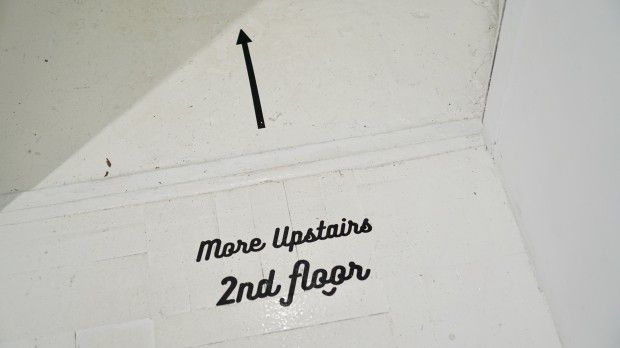
——キュレーション以外に、自分のアートの知識を活かせたのはどういうところでしたか?
岡本「販売でお客様とお話しをするときに、作り手の意図や制作の細かい方法がわかるので、どうしてこの価格になるのかというところまで説明ができたというのは強みだったと思います。お店に置くお花や、その水を綺麗に保つということ、空間の香りづけも、全てですね」
——なるほど。そこでの経験からGALLERY TARGETでキュレーションに携わるのは必然のように思えます。
岡本「実際にはBeauty Contest後は何をやっていいのかわからないという時期に突入しまして(笑)、色々なことを試しました。ブランディング会社や、絵を販売する会社に入ってみたり。日本に慣れていなかったので、とりあえず色々挑戦してみようと。それが最終的にここの社長の水野(桂一)に会う機会へ繋がっていったんです。当時、水野はここのスペースの1階でアート・ディーリングをしていたんですね。ウォーホルが好きで、展覧会はせずにTARGETの名前で絵の販売をしていました。『こんなスペースがあるのに展覧会はやらないのですか?』と尋ねたら、『原宿でウォーホルを飾っていたら、格好いいなと惹かれて絵を買ってくれるかなと思って』と。それを聞いて、こういう人と働けたらいいなぁと思ったので、私にここで展覧会をやらせてほしいとお願いして働き始めました」
——水野さんも藤本さんと同様に、利益よりも粋を大切にされている方なんですね。
岡本「そう(笑)、そういう心を開ける人でないと一緒に仕事は出来ないですね。最初は『The New York Connection』ということで、Lady Aiko(Aiko Nakagawa)さんにNYで活動している日本人アーティストのグループ展をやってもらいました。NYのコネクションというところが私の強みだと思っていたので、大好きなアーティストたちを出して日本で名前を上げてほしいという企みのもと、その後の展覧会のアイデアを形作りました。
お金だけでいうと、アート・ディーリングのほうが利益は出るし、展示会は利益が薄い場合がほとんどです。アート・ディーリングでの固定のお客さまがいるというのはありがたいですね。その方々は直接ギャラリーに足を運んだことでリピーターになったり、水野の同業者の方やその繋がりからご紹介いただいた方たちです」
—Besides curating, where have you been able to exercise your knowledge in art?
Okamoto: “I believe I had an advantage when talking to customers upon selling because I understood the intentions of the creators and the specifics in production, so I was able to explain why things were priced a certain way. As well as in the flowers placed in the store, to maintain that water cleanly, the aroma of the space. Everything really.”
—I see. I think it’s only natural that you used your experiences there to curate at GALLERY TARGET.
Okamoto: “Actually, after Beauty Contest I went into a time period when I did not know what I wanted to do, and I tried various things. I tried working at branding companies and companies that sold art. Since I was not used to Japan, I thought I would first challenge myself to many things. That ultimately lead me to meet the CEO of this gallery, Keiichi Mizuno. At the time, Mizuno was art dealing using the 1st floor of this space. He loved Warhol, and would sell art under the name TARGET without holding exhibitions. I asked him, “You aren’t holding exhibitions even with a space like this?” and he said, “If I displayed Warhol in Harajuku, I thought people would think “Oh, that’s cool” and be attracted to it, and buy art.” After hearing this, I thought “How nice it would be to work with a person like that”, so I asked him if I could hold an exhibition here, and started working.”
—Along with Mr. Fujimoto, you also value compassion over profit.
Okamoto: “Yes, haha. I cannot work with someone unless they open up their heart like that. First, since it was The New York Connection, we had Lady Aiko (Aiko Nakagawa) do a group exhibition with Japanese artists that were active in New York. I believe having connections in New York worked to my advantage. I shaped the ideas for the exhibitions thereon with the hope of sending out artists I loved to gain recognition in Japan. If speaking in terms of money, art dealing makes more profit and exhibitions often result in a small profit. I am thankful of the returning customers in art dealing. Such people became returning clients from visiting the gallery first-hand. They were people in the same profession as Mizuno or people whom he had connections with.”
——本当にアートを見かけて、ふらっと入るお客様がいらっしゃるんですね。そういう光景があるのは素敵です。
岡本「ひとつ利点としては、ここの場所は昔Gallery 360°があったんですよ。360°は方針ややり方などとても尊敬できるギャラリーで、仲良くさせていただいているので、そうしたところとお互い紹介しあったり」
――Gallery 360°とこちらは似た空気を感じますよね。
岡本「そうかもしれませんね、マイペースなところとか(笑)。アーティストもお客様も、『良い人なら一緒にやりましょう』といったスタンスで、皆に良い顔はしなかったんですよ。偉そうな意味ではなく、こちらも見返りは気にせず、喜んでくれるなら全力やりたい。だからこそ、皆を相手にすることは出来ないんです。そのスタイルは、時間はかかるけれど絆は深くなります。その輪が少しずつ広がって、段々とファミリーみたいな形が出来ているのも嬉しいです。それぞれのアーティストが本国で有名になってくれたからこそ、この場所も知ってもらえるようになってきているので、出来ることがあったらお返ししたいという気持ちでやっています」
——アーティストとギャラリーの関係は喧々諤々になりがちですけれど、Targetも360°もフェアでありフレンドリーなんですよね。その育まれている関係性は展示にも表れている気がします。
岡本「そうしていきたいです。先日のESPO(Stephen Powers)は『何を出すかはサプライズね』と言ってきて、こちらは『オッケー』という答えで(笑)。完全に信頼関係がある上でやっているのですが、このやり方はあまりないでしょうね」
——おそらく岡本さん自身がアートをやっていたからこそのスタンスなのだと思います。
岡本「そうですね。必要な距離感はありますが、結局は信頼関係のもと成立することなのでその基盤は大切にしたいです」
—It seems as though there are really customers who see art and stop by. That sort of sight is fascinating.
Okamoto: “One benefit is that there was previously Gallery 360°in this place. 360°is a gallery that I really respect in terms of their policies and ways, and we have had the benefit of working closely with them, so we introduce and advertise each other.”
—Gallery 360°and GALLERY TARGET have similar atmospheres.
Okamoto: “Perhaps so, in the freedom we exude. Both artists and clients are chosen like, “Let’s work with them if they’re good people.” We haven’t been overly friendly with just everyone. Not in a conceited way, but we simply do not care for anything in return. If it makes them happy, we want to give it our all. That is especially why we cannot work with everybody. This style takes time but creates deep bonds. That circle expanded little by little, and now we are getting closer to having our own little family, which makes me happy. Because each artist has become renown in their home country, our gallery has had the chance to be known by many people. I run this place with the hope of giving back to these artists.”
—The relationship between artists and galleries tend to get tumultuous, but both TARGET and 360°are fair and friendly. I think the relationship being bred is also shown through the exhibits.
Okamoto: “That is what I want to keep doing. At our recent exhibition with ESPO (Stephen Powers), he told us, “What I’ll be presenting is a surprise” and we answered, “Okay.” We have done so with great trust for each other, but I would believe this way is uncommon.”
—I believe you do it that way, perhaps because you did art yourself.
Okamoto: “That’s true. There are necessary professional distances to be kept, but ultimately it is the kind of thing that is established upon trust, so I want to cherish that foundation.”
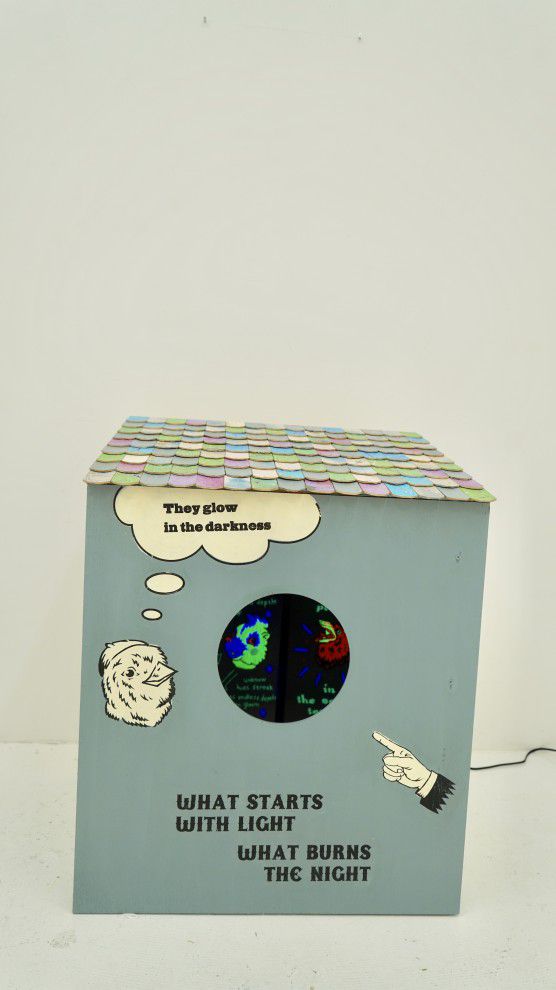
——軌道に乗るまでは何年くらいかかりましたか?
岡本「ようやく安定してきたなと思えるようになったのは本当につい最近です。なかなか日本人はアートを買うという習慣がないので、それが私の一番の不安だったのですが、お客様がここで買うことを躊躇しなくなったということを感じ始めたんです。『ここに来たら何かあるかな』という認識をしてもらえるようになったのかな。また、少しずつスポンサードも増えてきました。アーティストの作品を買うということは、自分のためでもあるけれど、アーティストの人生を少しでもサポートするということ。そういう認識のもと、私たちが見せるものが良いなと賛同してもらえたという実感が出てきました。アートは生きる上で不必要なものだからこそ、経済の恩恵を一番最後に受けるし、最初に破たんを受ける。けれども、あることによって人生が豊かになるのです」
——アーティストやアートを学んでいる学生に対して、ギャラリーとして何かアドバイスはありますか?
岡本「とりあえず、何をしたいのか決めてから作品を売り込んだほうが良いです。お金を作りたいのであれば、売れる系統の作品をたくさん作って販売に強いギャラリーに売り込む。自分の道を極めたい人はそうしたことのサポートをしてくれるギャラリーもあります。まず、アートで何をしたいのかということを決めてほしいですね。作るのは楽しいし、たくさん作れるけれど、それを世の中に出す方法は自分で決めないと。ギャラリーに決められて不幸になってしまうのは悲しいですよね」
——最後に、GALLERY TARGETとしてこれから挑戦したいことは?
岡本「中間層のギャラリーがSNS市場に押されてなくなっていっているという現状ですが、アパレルも然り、どの業種もそうなっています。ウチも中間層ですので、まずは自分たちの色を大切にしていかなければならないと考えています。物や情報が氾濫していて、皆が自分たちで選べなくなっている場合も多い中で、誰かが同じことをずっと発信し続けていればそこにはそれが好きな人たちが集まっていくしドンドン増えていくと信じたいです。ギャラリーが増えすぎてしまったので、ふるいがかかっているというのが現状ですが、良いところは絶対に潰れないです。また、展覧会以外の柱として、企業がアーティストを使ってブランディングイメージやプロモーションの促進プロジェクトをするキュレーションに注力したいです。企業のほうも策が尽きて『とりあえずやってみなきゃ分からない』という段階に突入しているのが現状で、アーティストの発想力を求めています。そこに突っ込んでいきたい。アートって何でもありだから、面白い発想がたくさん出せるんですよ。そこが強みだと思います。あとは里帰り的にアラブ諸国ともお仕事をしたいです(笑)」
—How long did it take for the gallery to get on track?
Okamoto: “It wasn’t until recently that I thought it had finally become stable. Japanese people do not have a habit of buying art, so that was my biggest worry, but I started feeling customers stop hesitating to buy from here. Maybe they started to think, “I’ll find something if I come here.” In addition, we have also had more sponsors. Buying artists’ works are for yourself, but also to support the artist’s life, even by a little. With that sort of perception, I feel that people approve the pieces that we show. Because art is not a necessity for living, it receives the last benefits of the economy and is the first to become bankrupt. However, having art makes life fulfilling.”
—Do you have any words of wisdom as a gallery for students that study artists/art?
Okamoto: “First off, you should decide what you want to do and then sell your work. If you want to make money, create many pieces that will sell well and sell them to well-known, strong galleries. For people that want to pursue their own paths, there are galleries that support that too. I would like them to decide what they want to do with art first. Creating is fun, and you can create a lot, but you have to decide how to send that off to the world yourself. It’s sad to be unhappy because the gallery chose for you.”
—Lastly, are there any things you would like to try with GALLERY TARGET?
Okamoto: “Currently, the middle-class galleries are not being advocated in the social media market, but it is like that for apparel and any other profession. We are mid-class as well, so I believe we must cherish our own style first. Things and information are being flooded, and there are many cases in which people cannot choose for themselves. Within that, if someone continues to deliver the same, unchanged things, people who like that will gather and the circle will become bigger. Too many galleries have been made, so the reality is that we are at risk of elimination, but the good places never shut down. In addition, as a pillar other than exhibitions, I would like to focus on curating projects for businesses to use artists for branding and promotion purposes. The reality is that businesses are out of measures and are at the stage of “We won’t know unless we try”, so they seek artists’ imaginations. I want to dive into that. Anything is accepted in art, so we can put out many interesting ideas. I think that is its strength. Other than that, I would like to work with the Arab States to pay a visit home, haha.”
GALLERY TARGET
2007年、オーナーの水野桂一が敬愛するアンディ・ウォーホルの作品を展示販売するためにオープン。キュレーターの岡本智子が加わり、ピーター・サザーランド、スティーヴン・パワーズ、マルセロ・ゴメス、高木耕一郎など国内外のアーティストの展示を開始。
東京都渋谷区神宮前2-32-10
Tel 03 3402 4575
www.gallery-target.com
GALLERY TARGET
Opened in 2007 to display and sell the owner, Keiichi Mizuno’s beloved works of Andy Warhol. Curator Tomoko Okamoto joined to begin exhibits for artists in and out of Japan such as Peter Sutherland, Stephen Powers, Marcelo Gomes, and Koichiro Takagi.
2 Chome-32-10 Jingumae
Shibuya, Tokyo, Japan
150-0001
Tel +81-03-3402-4575
www.gallery-target.com
Photography Baihe Sun
text & edit Ryoko Kuwahara
